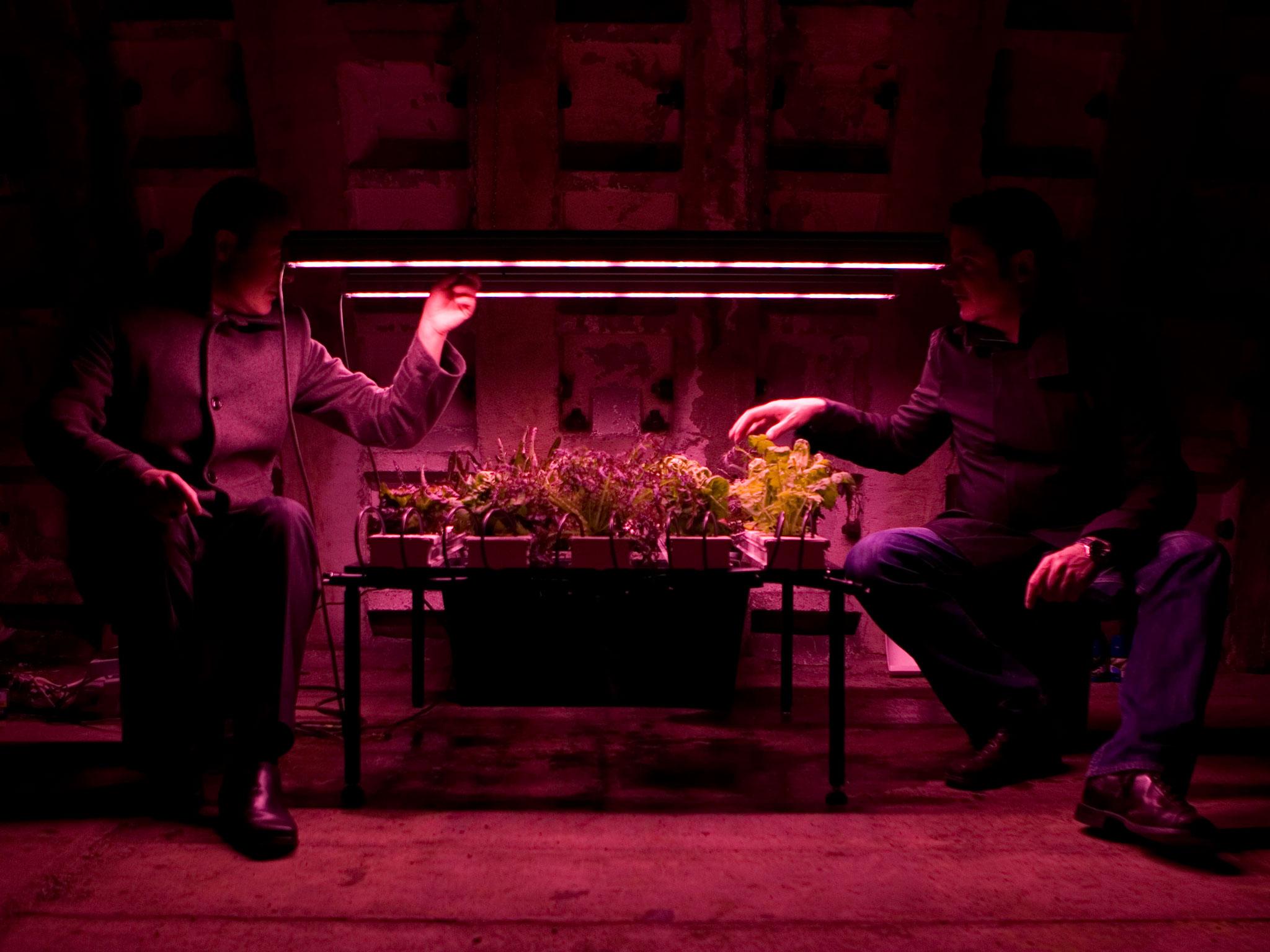Inside London's first underground farm
At 7,000 square feet, the tunnels have the capacity to accommodate up to 8,000 people. Nowadays, though, they’re used to host trays upon trays of sprouting herbs
Your support helps us to tell the story
From reproductive rights to climate change to Big Tech, The Independent is on the ground when the story is developing. Whether it's investigating the financials of Elon Musk's pro-Trump PAC or producing our latest documentary, 'The A Word', which shines a light on the American women fighting for reproductive rights, we know how important it is to parse out the facts from the messaging.
At such a critical moment in US history, we need reporters on the ground. Your donation allows us to keep sending journalists to speak to both sides of the story.
The Independent is trusted by Americans across the entire political spectrum. And unlike many other quality news outlets, we choose not to lock Americans out of our reporting and analysis with paywalls. We believe quality journalism should be available to everyone, paid for by those who can afford it.
Your support makes all the difference.At a time when UK supermarkets haven taken to rationing vegetables as a result of a poor harvest in Southern Europe, one green-fingered duo have found a new solution to the healthy-eating problem: Grow your own greens, deep down below the City of London.
If you get off the tube at Clapham Common and then step into a cage-like lift that takes you about 100ft below the bustling streets of South London, you’ll find yourself in Growing Underground, an urban farm, housed in a network of dark and dingy tunnels originally built as air-raid shelters during World War II.
Childhood friends and founders Steven Dring and Richard Ballard had a simple idea – find a solution to the way that we, often arduously, source our food.
Their business could be a step into changing how we eat. Their aim is to reconnect British consumers with local products while reducing food miles and waste.
“There’s climate change, there’s population growth, and you don’t want to keep flying stuff around the world. We need to look at our food system,” Mr Dring told The Independent.
“We’ve got enough food to feed the planet, it’s just all in the wrong place. We started looking into that and how to make it into a business,” he added.
At 7,000 square feet, the tunnels have the capacity to accommodate up to 8,000 people. Nowadays, though, they’re used to host trays upon trays of sprouting herbs.
About twenty different types of herb are being cultivated in the former bomb shelters, including pea shoots, rocket, red mustard, pink stem radish, garlic chives, fennel and coriander. The plants are being supplied to markets and wholesalers right across London.
Mr Dring said that Growing Underground uses hydroponics, a system whereby plants are grown without soil but with the help of low-energy LED lights. This allows each crop to grow in a carefully controlled, pest-free environment, and the farmers to produce plants of consistent quality, regardless of the whether the city above is being graced with blazing sunshine or pelted with relentless rain.
Meanwhile, a high-tech irrigation system allows the water that is needed to grow the plants to be treated on-site and recirculated, saving water in the process.
The farm’s customers include food suppliers at New Covent Garden Market and Borough Market.

And even celebrities have taken note.
The subterranean farm has secured the backing of celebrity chef Michel Roux Jr, who happens to live almost directly above the farm, and who has been named a non-executive director of the company. The business now sells to local restaurants including Mr Roux’s Michelin-starred celebrity haunt, Le Gavroche in Mayfair.
But Mr Dring says that the interest from high-end chefs only accounts for a small minority of business for now. He says that dishes served in Michelin-starred restaurants tend to have such delicate flavours that you would only use one or two leaves anyway. Contract caterers, though, will demand a much bigger order as they might be doing 1,000 covers in one go.
This week, Growing Underground celebrated yet another distribution milestone by striking a deal with online retailer Ocado – it’s the first major retail deal for the five-year old business and the company hopes that it could pave the way for more.
Mr Dring said he was “thrilled” to have clinched the deal with Ocado, and said he is in talks with other retailers with his sights set on international expansion.
The business has raised over £1m through crowdfunding, and it now hopes to break even by October.
So is this the future of the whole farming industry? Perhaps not entirely.
Rather than being a threat to the bigger farms, Mr Dring says that he expects the relationship between Growing Underground and bigger farms to remain a collaborative one rather than a competitive one.
The company has so far received very positive feedback from farmers who want to share knowledge and learn from their techniques, Mr Dring says.
“Farmers have seen climate change happening. So when they see a type of new growing, they are intrigued,” he said. “They look at it as potential ideas to upgrade their own operations, but also to understand the use of agriculture technology.”

Join our commenting forum
Join thought-provoking conversations, follow other Independent readers and see their replies
Comments